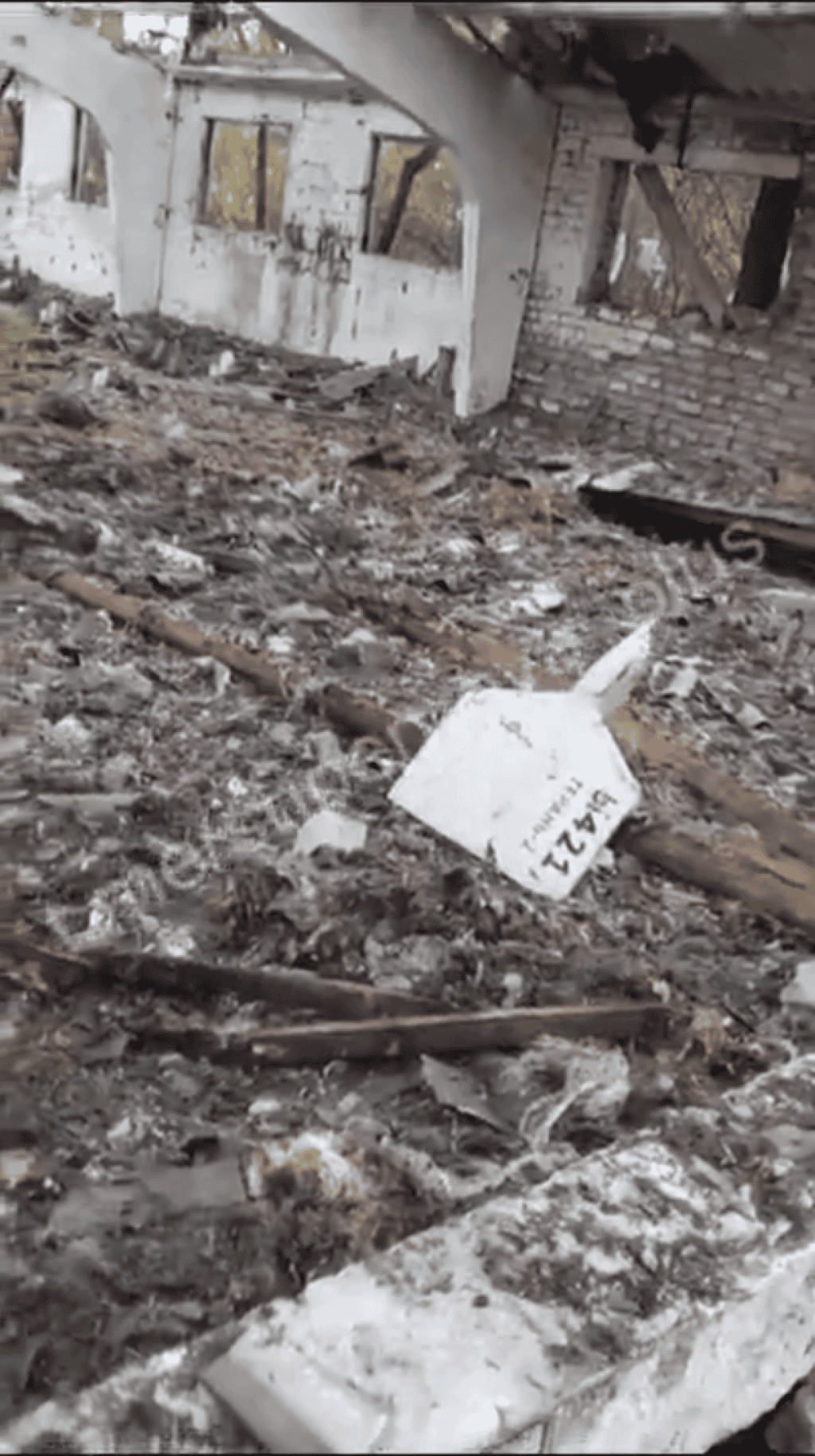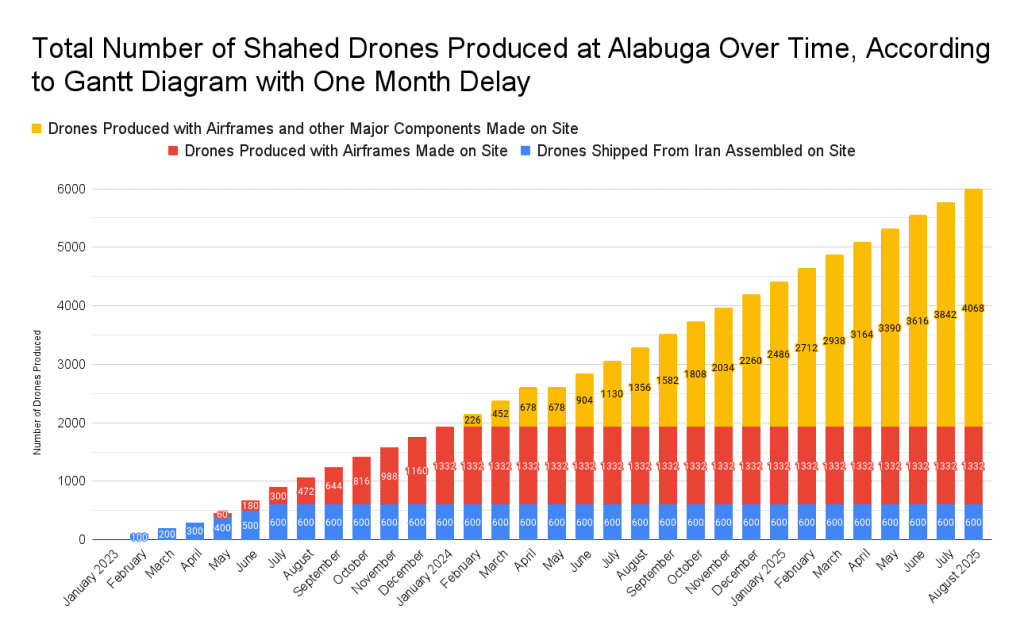Russia attacked Ukrainian port infrastructure and military facilities in a series of missile and drone strikes over the last few days. Markings seen on a Shahed-136 kamikaze drone used in one of the strikes indicate Russia has likely produced at least 400 of these unmanned aerial vehicles (UAVs).
A video posted on social media on October 29 shows what appears to be the aftermath of a Shahed-136 strike. Amidst the rubble lie the remains of the drone’s MD550 engine as well as one of its stabilizers. The stabilizer bears the serial number “Ы421” along with the name “Geran-2,” the Russian moniker for the Shahed-136.

The Shahed-136 is a one-way attack drone that Tehran began providing to Moscow in summer 2022 along with its smaller cousin, the Shahed-131 (a.k.a. Geran-1). According to Ukrainian military data, the Russians have launched over 2,000 of these drones, including a record 500 in September 2023.
Moscow uses its Geran UAVs to attack both military and civilian targets, including critical infrastructure. Russia often employs them in conjunction with conventional missiles to distract Ukrainian air defenses or reveal their positions. While relatively easy to shoot down, these drones tax Kyiv’s supply of scarce surface-to-air missiles, potentially rendering Ukraine’s skies more permissible for Russian missiles and aircraft.
Russia, with Iran’s help, has begun making Geran-2s itself in effort to expand its supply. As part of a $1 billion deal with Tehran, a company in Russia’s Tatarstan region is working to churn out 6,000 of these drones by September 2025.
Evidence that Russia has launched localized production of Geran-2s first surfaced last summer. Whereas the serial numbers on the Iranian-produced version begin with the letter “M,” most Russian-made Geran-2s — at least those seen in public — have had serial numbers beginning with the Russian letter “Ы.” In at least one instance, Moscow has used a Geran-2 whose serial number began with “K” (K027), but the reason for the difference is unclear.
The figures after the letter have increased steadily over time, likely reflecting the number produced. For example, a pair of Geran-2s downed in September 2022 were labeled “M205” and “M214,” whereas one launched the next month was marked “M293.” By last May, Russia had used number “M1062.”
Likewise, a photo shared on social media in early July showed the remains of a Geran-2 marked “Ы002.” In early August, Russia attacked a port in Odesa using a drone labeled “Ы089.”
Since the UAV seen in the October 29 video bears the serial number “Ы421,” one can deduce that Russia likely assembled or produced at least 420 Geran-2s between early July and late October, or around 3.5 per day.
Leaked documents obtained by The Washington Post and analyzed by the Institute for Science and International Security call for the Tatarstan company to deliver 6,000 Geran-2s by September 2025. The plans break production down into three phases.
In phase one, January-July 2023, the company must assemble 600 Geran-2s using Iranian-provided parts. Beginning in May 2023, the company is supposed to begin producing Geran-2s using locally made airframes and other components, delivering another 1,332 drones by February 2024. From there, the company must make 4,068 more Geran-2s using locally made engines. The Russians are reportedly developing an improved motor with Iranian assistance, designed to improve the drone’s range and speed.

Exactly how far along the Russian company is in its production schedule is unclear. The leaked documents reportedly indicate that early delays put production at least a month behind schedule, maybe more. If the firm has made only some 400 Geran-2s, then it would be roughly half a year behind schedule. But 400 represents the likely floor, not the ceiling; Russia may have produced many more.
Notably, by July, the Russian company had begun replacing some Iranian-supplied parts and components with Russian ones. This includes the airframe, which the firm is supposed to swap out in phase two. Russia also appears to have added a different warhead that contains tungsten balls. According to the leaked documents, the Tatarstan company did not plan to establish warhead production until late spring 2024. So the firm may be ahead of schedule in that area.
According to the Ukrainian military, Russian-made Geran-2s have continued to use MD550 engines, albeit ones produced by a Chinese company rather than Iran’s MADO. But the model is the same, suggesting production likely has not advanced to phase three.
Although it remains unclear exactly how many Geran-2s Russia has produced, one thing is certain: Moscow is intent on expanding its capacity to destroy Ukrainian critical infrastructure and military facilities. Ukraine’s air defense forces will need more Western aid in the months and years ahead.







